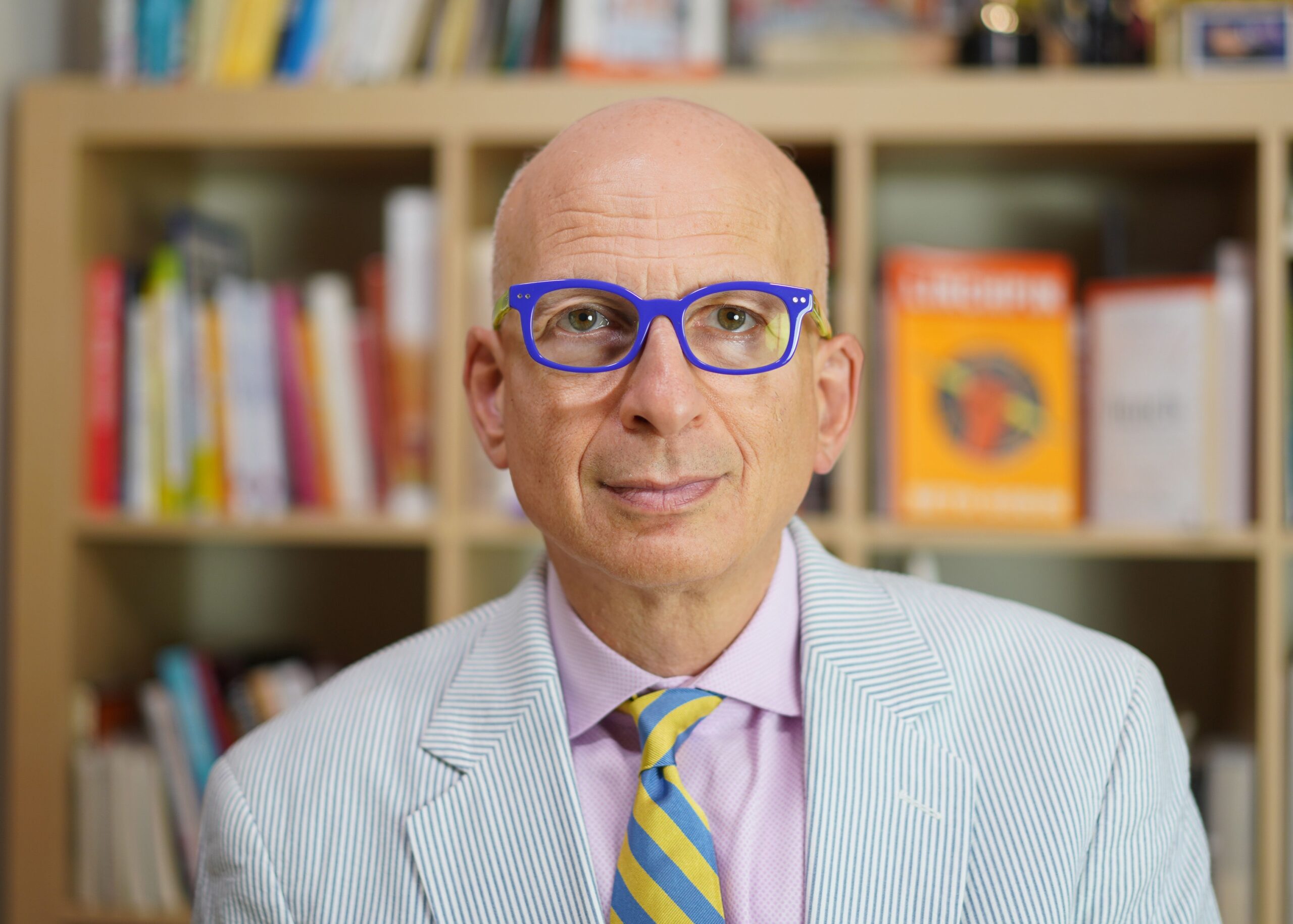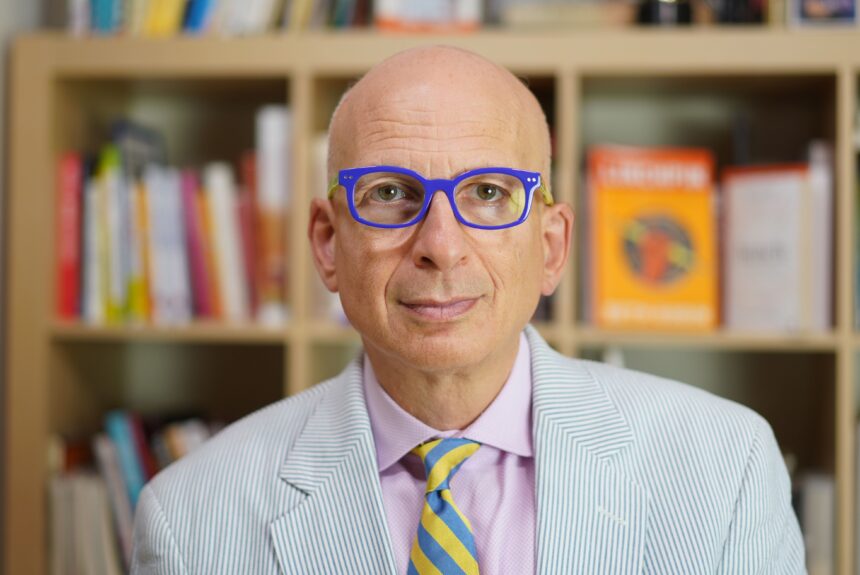Last month, I had the great pleasure of interviewing Seth Godin for my Forbes.com blog “Career Bliss” as well as in my Finding Brave podcast, about his powerful new book, This Is Strategy: Make Better Plans, already a #1 bestseller in key categories. Reading Seth’s book and interviewing him several times about his personal take on strategy and strategic thinking and how we often get it so wrong – in our lives, careers and businesses – was highly instrumental for me, for both my personal life and my business.
In my view, it’s a critical book for anyone who wishes to make an impact and change in the world, and do it in the most effective, productive and growth-inducing way possible.
Check out Seth’s guidance and insights below. I trust this information will be as helpful to you as it has been for me.
Renowned author, entrepreneur, and marketing expert Seth Godin is known for his transformative ideas in business and leadership. With 22 bestselling books that have been translated into 39 languages, including his breakthrough books Unleashing the Ideavirus, Permission Marketing, Purple Cow, Tribes, This is Marketing, and more, Godin has inspired millions to rethink how they approach marketing, creativity, and work. Godin’s blog – called Seth’s Blog – is one of the most popular blogs in the world, and delivers daily insights on everything from innovation to personal growth. He is also the founder of altMBA, an online workshop for leaders, and the former VP of Direct Marketing at Yahoo!! and the founder of the pioneering online startup Yoyodyne.
In his new book out this month, This Is Strategy: Make Better Plans, Godin offers a key guide to thinking strategically in a complex, ever-changing world. It shares principles of effective strategy and provides readers with practical insights and tools to align their decisions and efforts with a clear, impactful vision.
An essential theme of the book is encapsulated in this quote:
“Strategy…involves anticipating and planning for the actions and reactions of other actors within the system. This means considering not only the direct effects of strategic choices but also the indirect effects that come from the responses of competitors, customers, and even the environment. The success of a strategy is contingent not only on your actions but also on the actions of others…Successful people figure out how to trade their time and their effort for the change they seek to make in the world.”
Here’s what Seth shares on my podcast Finding Brave:
Below, Godin shares more about what he feels millions of people today are getting wrong in developing effective strategy, and shares actionable steps to engage in transformative strategic planning.
Kathy Caprino: Seth, why did you feel it was important to write this book now, and what specific changes or challenges in the world of strategy motivated you?
Seth Godin: There isn’t a world of strategy, because few people know what strategy is! It isn’t a goal. And it isn’t a list of tasks—that’s tactics. Strategy is a flexible plan that guides us as we seek to create a change. It’s scary and it takes time. As a result, we look away and don’t talk about it.
But the world is shifting, faster than ever, creating opportunities every day. This rapid change is our chance to make a better plan and create a bigger impact – whether that’s at work, at home, or in our communities
My primary goal in writing this book is to give people a tool and an excuse to talk about their strategy. And a support system to put it into action. Once we make assertions and share them, we can lean into the productive and powerful work of making things better.
Caprino: OK, so what’s the best first step to take when we want to build an effective strategy to bring us forward to achieve our highest goals?
Godin: Start by clearly defining the change you want to see in the world. Reflect on where the opportunities lie and how external forces like market shifts, cultural changes, and technology can help or hinder your progress. Recognize that the world is in constant motion and your strategy must be flexible. Regularly revisit your strategy and make adjustments as needed to align with evolving realities.
Caprino: In your book, you mention the concept of strategy as a philosophy of becoming. Can you elaborate on what you mean by this and how it differs from traditional views on strategy?
Godin: A gardener plants seeds, but doesn’t expect that they’ll have an orchard or a bushel of crops in an hour or even a week. Planting is simply a step in the unfolding of what is to come later. That’s strategy.
Strategy is the plan – it’s what we will do. And it requires us to say “no” to things – things that we could do, but won’t – as we make a commitment to the things we say “yes” to instead. Who will we become? Who will we be of service to? And who will they help others to become?
Here’s a helpful action step: When building your strategy, focus on long-term growth, just as a gardener nurtures plants over time. Say “no” to distractions and activities that do not contribute to your larger vision. Identify the key actions that will help you grow into the organization or individual you aspire to be, and align your daily decisions with this goal. Remember that strategy is not just about getting results, but about who you become in the process.
Caprino: You also discuss the importance of empathy in strategic thinking. What is empathy as you see it and how can leaders cultivate empathy within their organizations to improve their strategic outcomes?
Godin: Empathy requires the humility to realize that other people have the independence and power to make choices, and those choices will always be based on their experience, worldview, and self-interest. You can’t force others to do what you choose.
When we surrender authority, seeing and hearing the people we seek to serve is much easier. When we realize that they have options, we’re able to offer them a chance to go where they seek to get instead of insisting that they go the way we expect. Plant your seeds where the conditions are right.
Action Step: To cultivate empathy in your organization, leaders should create space for open communication and actively seek input from team members, customers, and stakeholders. Develop systems to regularly gather feedback and insights, whether through surveys, one-on-one conversations, or collaborative brainstorming sessions. Leaders should model empathy by acknowledging and addressing the concerns of those they lead, fostering a culture where everyone feels heard and valued.
Caprino: The book highlights the role of systems in strategy. Can you explain how understanding and leveraging systems can lead to better strategic decisions?
Godin: Better waves make better surfers, but we seem to spend all of our time on the board instead of finding a more satisfying place to go surfing in the first place. Systems are the invisible forces that push us around, and systems are resilient.
It’s possible to push back against a system, to find leverage points to tip it one way or another. But most of the time, the system is far more powerful than we are, and our most useful path is to work with the system until we have the resources we need to make an impact.
If we choose not to see the system, we will always be at a disadvantage.
Action Step: Begin by mapping out the systems you are working within—economic systems, organizational hierarchies, technological trends, etc. Identify the key leverage points where a small action can create outsized results. Rather than trying to change the entire system, focus on influencing those specific areas that can generate the greatest impact, whether it’s by adjusting internal processes or aligning with external market forces.
Caprino: You offer several real-world examples of individuals and organizations overcoming strategic challenges. What common threads or lessons can be drawn from these examples that readers can apply to their own strategic endeavors?
Godin: The book highlights elegant strategies. Elegance is simplicity, efficiency, and effectiveness. It’s the least complex and clearest way forward. Working with systems instead of against them. And while they’re easy to describe, they’re often difficult to stick with.
If it’s important enough to do the work, it’s important enough to take the time to articulate your strategy and make it better.
Action Step: Identify the most straightforward and effective approach to solving your strategic challenges. Focus on simplicity—remove unnecessary complexity that could cloud your decision-making. Create a clear roadmap and be disciplined in sticking to it. Regularly revisit and refine your strategy to ensure it remains efficient and aligned with your goals.
Caprino: The idea of ‘big problems requiring small solutions’ is a recurring theme in your book. Can you provide an example of how this approach has been successfully implemented in a real-world scenario?
Godin: Giant initiatives get a lot of our attention, but it’s the incremental shifts that transform our world. Solar panels, installed worldwide, a few more every second, are already changing how we generate and consume power–far faster than centralized grid power ever did.
Action Step: When facing big problems, focus on small, achievable steps that can accumulate into significant change over time. Break down large challenges into smaller, manageable tasks, and track incremental progress. This approach can be applied across industries—from adopting sustainable practices in energy to improving operational efficiency in a company. The key is to maintain focus on small, steady wins that contribute to the overall goal.
Caprino: Personally speaking, what would you say is the biggest misstep or mistake you feel you’ve made in the past, in terms of your own strategic direction, vision or career/business strategy that you’ve learned from?
Godin: It’s easy to fall in love with how clever we are, how fast we’re sure we’re going to change things and how easy it might be.
But the reality is that real change comes from culture and expectations and systems. We’re capable of making an impact if we can find the guts to lead, not manage, and to connect people who are seeking to go where we’re going.
Overall, an essential lesson in strategic planning is this:
Learn from past mistakes by staying grounded in reality. Avoid overestimating the speed or ease of implementing strategic changes. Focus instead on building a culture that fosters resilience, collaboration, and long-term thinking. Understand that real impact is made through patience, persistence, and connection with others who share your vision.
For more information, visit Seth Godin and This is Strategy: Make Better Plans. Hear him speak in-depth about this topic here.
Kathy Caprino is a career and leadership coach,2x author, speaker, executive trainer and podcaster dedicated to supporting the advancement and success of women in life and business.






